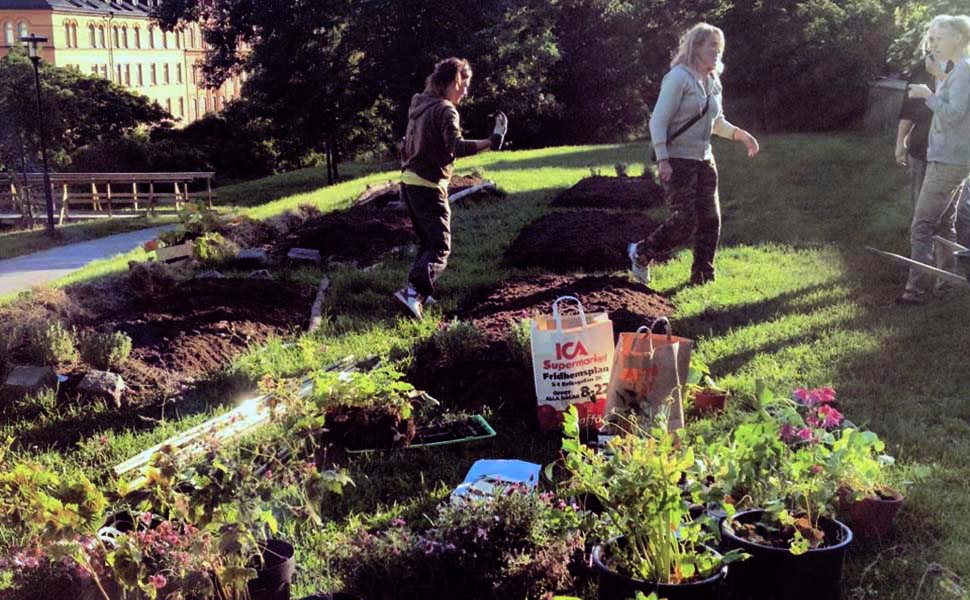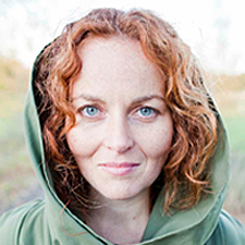
New licentiate thesis on urban food
We are facing increasing urbanisation and heightened challenges around food security. As a response to this there is a rising movement to make food more accessible in cities, to not just use urban green and in-between spaces as solely parks or open spaces. Urban agriculture and re-imagining parts of the urban space as a farm or a so-called ‘foodscape’, responds to these societal challenges and looks to form a transformative behaviour with food in the city.
The new licentiate thesis Organoleptic Interfaces: Exploring Embodied Methods in Foodscapes, written by Anna Maria Orrú, Department of Architecture, Chalmers University of Technology, tackles the challenges around foodscapes and food in the city. Urban population growth, unstable food security, environmental consequences of industrial food production are all motives for concern, alongside individual awareness of food provisioning, seasonal availability and behaviour.
Artistic-based explorations
As these challenges increase in complexity, alternate methods and processes are needed to formulate a symphony of relations to instigate action and agency from urban inhabitants that need to be put into dynamic constructs to revise behaviours and reframe patterns of thought. The research methodology embarks on artistic-based explorations into the role of corporeal thinking, situated knowledge, and sensorial relevance for studying the relation between body, food, and time within urban-making. All experiments and spatial immersions generate different modes of relating to the environment to produce situated knowledge using key methodological models including imagineering and staging fiction, metaphor and performativity.
International background
Anna Maria Orrú has, besides her doctoral studies, a background as an architect and has practiced both in the United States, United Kingdom and in Sweden. She has formulated her own practice studio since 2006, and worked also alongside transdisciplinary studios FoAM in Brussels, Amsterdam and Cornwall. As a result, she started their Nordic branch in 2010 in Stockholm. She writes in the thesis preface; “As an architect, I have lived three lives thus far. The first was the ‘architect in training,’ a nine-year endeavour. The second was the ‘architect in practice,’ one that stretched two continents. The third one is the ‘architect bridging into explorative and artistic enquiry,’ which brought me to embark on this PhD. All three lives thus far have been driven by the same ethos - towards an ecological objective.”

Anna Maria, what are your main findings so far?
The findings from the corporeal case studies and events is that in the process of embodiment, the invisible is made visible. In essence the body becomes a ‘connector’; between behaviour and space, everyday rhythms and ecology, and between humans and plants creating zones for meaning and deeper commitment.
What would be your advice to people working with urban food?
Get engaged! Discover new ways to get involved in alternative food formats within the urban landscape. It is important to try growing food yourself as the bodily experiential is the main driver to change behaviour. When in practice, talk to people who are growing urban food, and if you are the one growing, reach out to passer-by’s as well. They are curious to know – this has usually been my experience.
How will you develop your research going forward?
The research will now embark on a more thorough theoretical underpinning in terms of embodied methodology, phenomenological meaning and their potential. One more case study will occur at the AHA 2016 festival on Body Weather, and a more in-depth artistic understanding of the human species as a swarm, and our urban swarm behaviour. There is also the concern for terminology such as the Anthropocene when it comes to activating behavioural change, and a critical analysis of what urban societies need in terms of inducing action, not paralysis.
Gröna Linjen in Stockholm and AHA! Festival in Gothenburg are the movements that has been studied. In addition to the smart phone app Urban CoMapper which has been supported by Mistra Urban Futures, and in collaboration with PhD colleague Hye Kyung Lim.
Read more about Anna Maria Orrú's project A Biologically-Centered Framework in Urban Foodscapes
Questions?
Please contact Anna Maria Orrù, Chalmers University of Technology, orru@chalmers.se
Photo of Anna Maria Orru, copyright Tina Axelsson.
Photo of urban farming, by Anna Maria Orrú
Filer
-
Organoleptic Interfaces: Exploring Embodied Methods in Foodscapes